Professor Maria Hepel
hepelmr@potsdam.edu
EQCN Principles
State University of New York at Potsdam
Stowell Hall
44 Pierrepont Ave.
Potsdam , NY 13676, U.S.A.
Tel.: +1.315.267.2267
Fax: +1.315.267.3170
Research with
Students
Students List
Learning through
research
Raman Imaging and Spectroscopy Lab
Chemical and Biological Applications of Raman Spectroscopy (pdf, 7 MB)
Quartz Crystal Nanobalance Lab
Studies
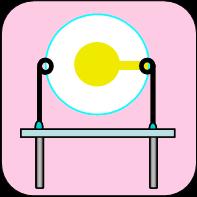
Electrochemical Quartz Crystal Nanobalance (EQCN) technique utilizes quartz vibrations and piezoelectric effect to measure mass changes as small as a fraction of a monolayer of atoms
Back to
| The frequency of vibrations is characteristic to the
piezoelectric material (quartz), cut direction of the crystal, and
physical dimensions. For instance, the AT-cut quartz crystal
wafers (35015' angle from c-axis) with thickness of 0.166 mm
have the fundamental frequency: 10 MHz. The AT-cut quartz crystals oscillate in the thickness shear mode. The AT-cut quartz crystal wafers show a negligible temperature coefficient at room temperature, which makes it a convenient choice for routine measurements. |
|
|
|
| Any mass attached to the faces of a quartz crystal wafer influences the oscillation frequency, which can be measured. The frequency shift is proportional to the mass rigidly attached to the crystal according the Sauerbrey equation: |
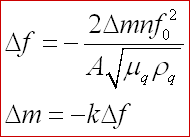
where
|
Δf
- change in the resonant frequency
Δm
- interfacial mass
n -
overtone number
fo
- oscillation frequency at the fundamental mode
A - surface
area
μq =
2.947 x 1011 g
cm-1 s-2
is the shear modulus
rq =
2.648 g/cm3
is the density of quartz
|
| For f0 = 10 MHz: | ||
| k = 0.8673 ng/Hz | ||
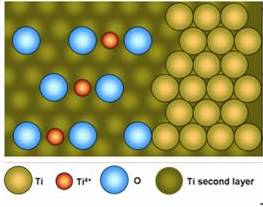
Nanoporous TiO2
for solar energy conversion and direct methanol fuel cells
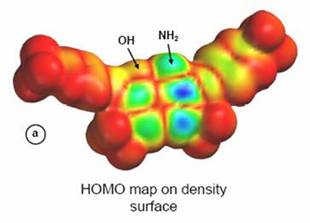
Degradation of dye pollutants
Electron density surface
with potential map for dye pollutant Remazol Blue Black. Decomposition of pollutants studied by photo-electrocatalytic method using TiO2, WO3, and MoO3 semiconductor electrodes
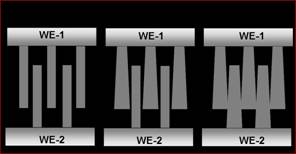
Quantum Conductance Monatomic Nanobridge Devices
studied using conductanc spectroscopy and AFM/STM
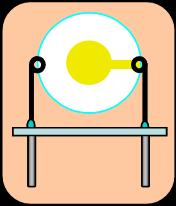
Oriented Single Crystal Quartz Wafer
used as a piezoresonator in sensors is able to detect nanogram mass changes of monolayer films
